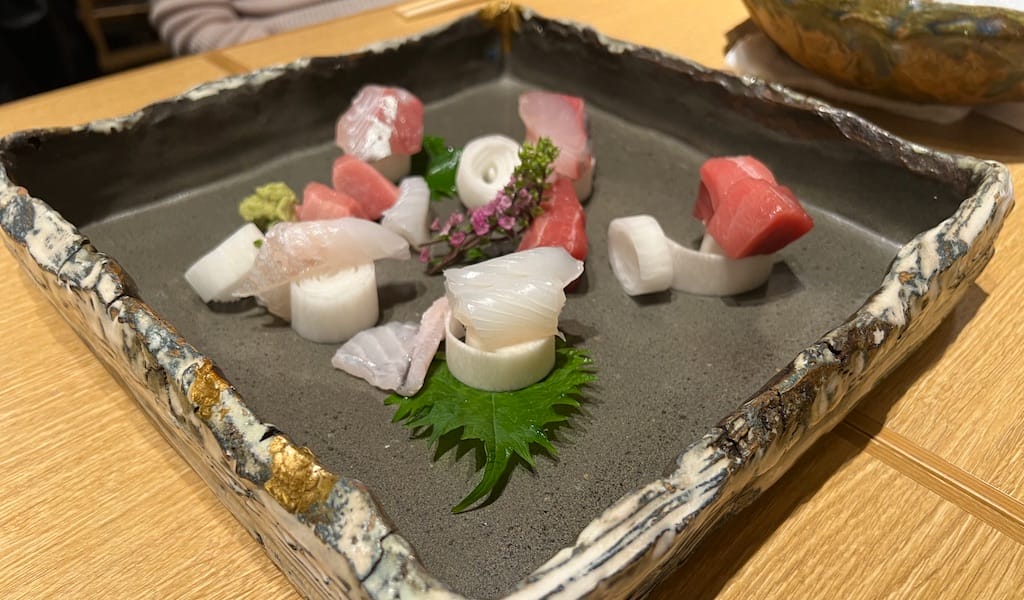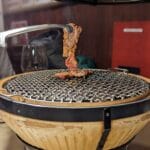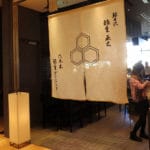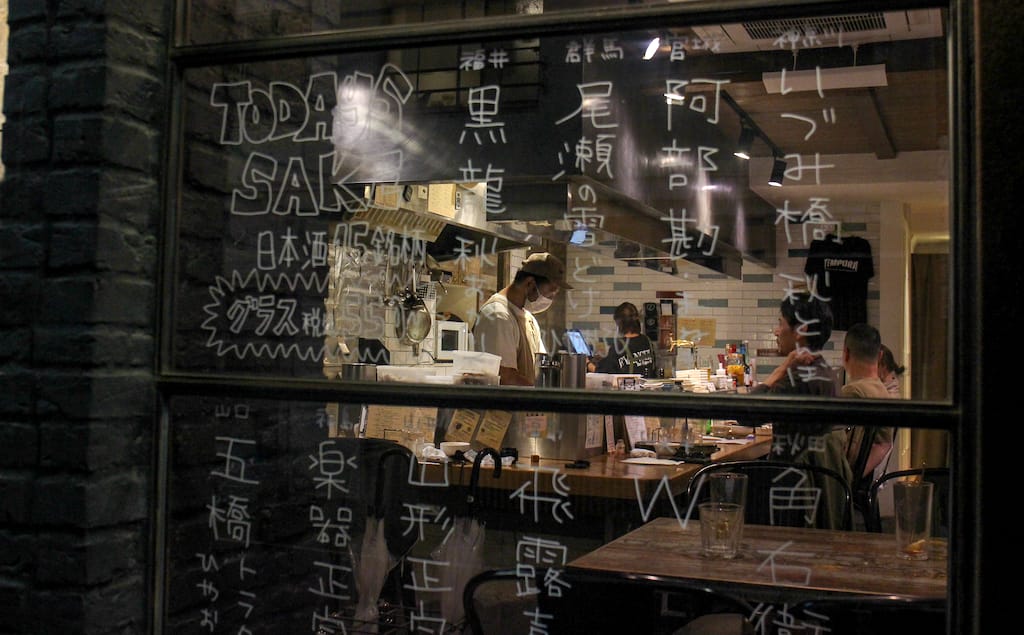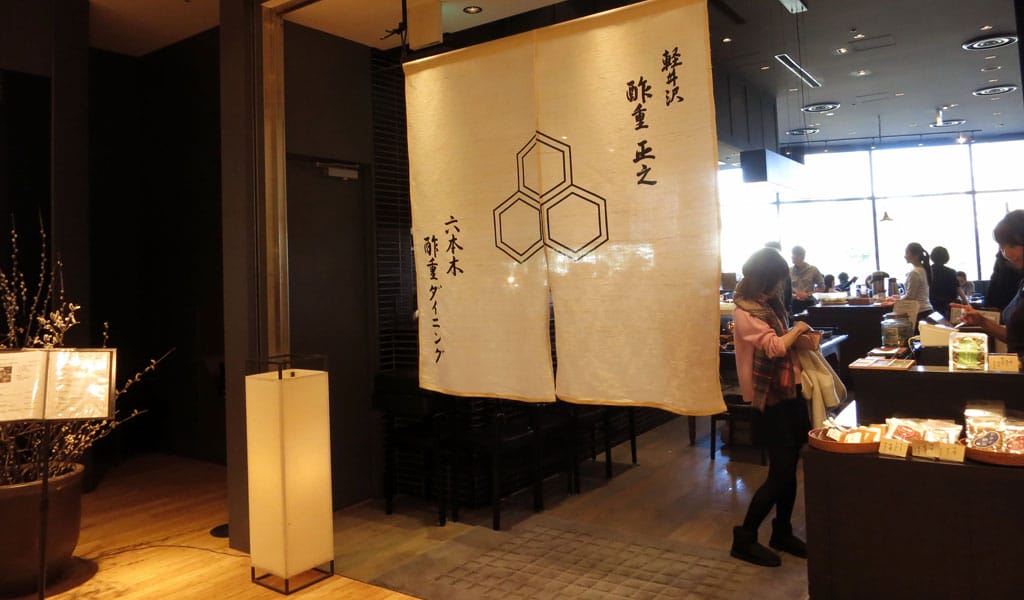The Japanese philosophy of ikigai follows four key tenets: to find in life what we love, what the world needs, what we are good at and what we can get paid for. At Miura, chef and owner Hiroki Nara has found ikigai through his stunning gourmet fish restaurant.
This idyllic little secret is tucked into a quiet backstreet of Shimokitazawa, one of the few neighborhoods in Tokyo devoid of skyscrapers and department stores. This small district lies in the heart of Setagaya, the second largest ward in Tokyo. The area has the ambience of a college town, filled with fashionable youngsters, many of whom are from the neighboring Todai University. The streets are lined with hipster coffee shops, vintage clothing stores and cheap eateries.
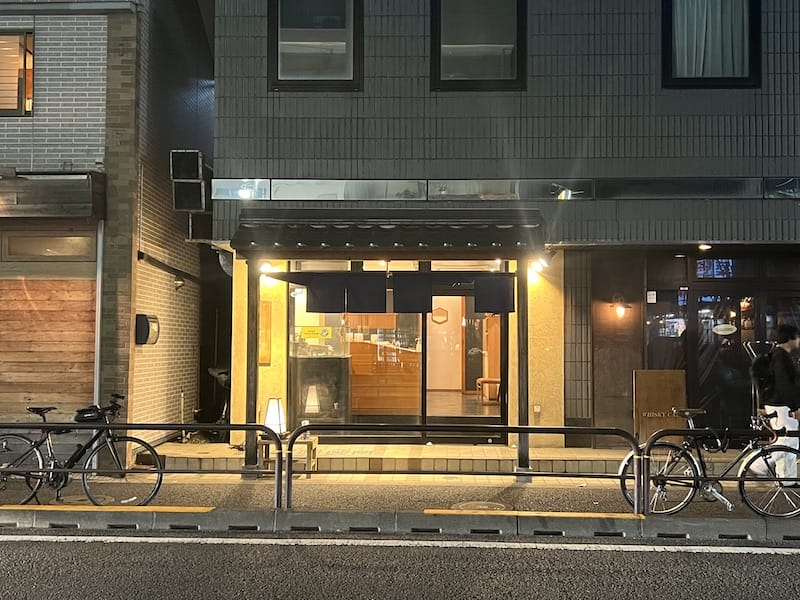
From the outside, it is hard to tell that there is even a restaurant here: All that is visible is a modest storefront with a fridge selling fish, side dishes and Nara-san’s famous carrot dressing. The only signage is a tiny fabric flag out front that reads “Miura.”
Once we enter, we shout out our best “sumi-masen!” (an often-used phrase used to get served at a restaurant) and are led through the shop into the restaurant, which is hidden behind a door. This spot is a well-known “secret” among locals, many of whom sit at the counter, front row, to watch Nara-san ply his trade. The crowd usually skews a bit older because of the higher prices than the casual eateries down the street, but at Miura you certainly get your money’s worth.
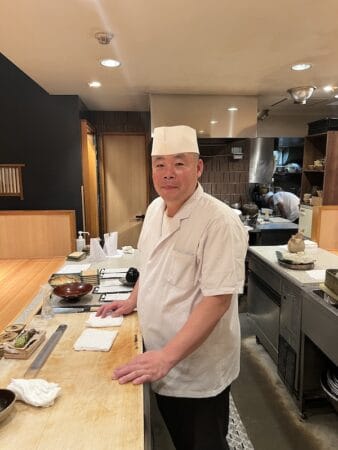
We watch as Nara-san’s knife slices effortlessly through the seasonal sashimi. Each move profoundly purposeful. He gathers coiled circles of daikon on which he will present the fish. He glides from station to station, never rushing, making sure that each dish is absolutely perfect. The grilled fish, tempura, sashimi – everything must meet his high standard of excellence.
A gaggle of sous chefs stand in the wings ready to bring out fresh ingredients and ferry dishes to diners. Every dish is painstakingly assembled and always of the highest quality. “The ingredients are the most important thing when it comes to cooking,” Nara-san tells us. “To bring the flavor out from the ingredients, rather than to add flavor to them.”
This is what he is good at: cooking simple yet gourmet food, creating a symphony of understatement. After leaving high school at 18, he started working under many different chefs in Nishi-Azabu and Kita-Senju, two very affluent neighborhoods. He grins and proudly states: “It took me 15 years before I opened my first restaurant. The focus being on fine dining that was affordable.” Miura is his fifth restaurant – the others include Nanako in Shinjuku, Nanadaiemetora in Omotesando, Uotaka in Yotsuya and Yamato in Shibuya.
Everything he serves feels like a signature dish – literally, all the plates were hand-crafted just for him. When he first opened the restaurant, a man by the name of Fujimura offered to make all of his crockery. Fujimura has recently retired, making these pieces priceless and truly unique.
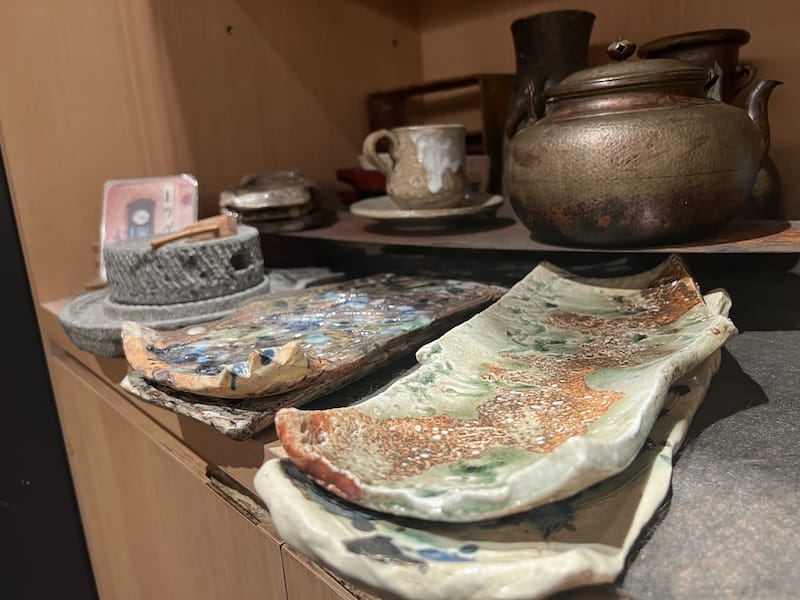
Though he grew up in Tokyo, Nara-san doesn’t seem to have been affected by the hustle and bustle. His kitchen is not chaotic like the streets of Shibuya, and his demeanor is always as welcoming and stress-free as a small island off of Okinawa.
With Miura, he wanted the kitchen to be open plan. In previous iterations, the sumibi-yaki (traditional grill), where the fish and the meat are cooked, was hidden away. Now it stands center stage as a testament to the successful career he has built from the ground up.
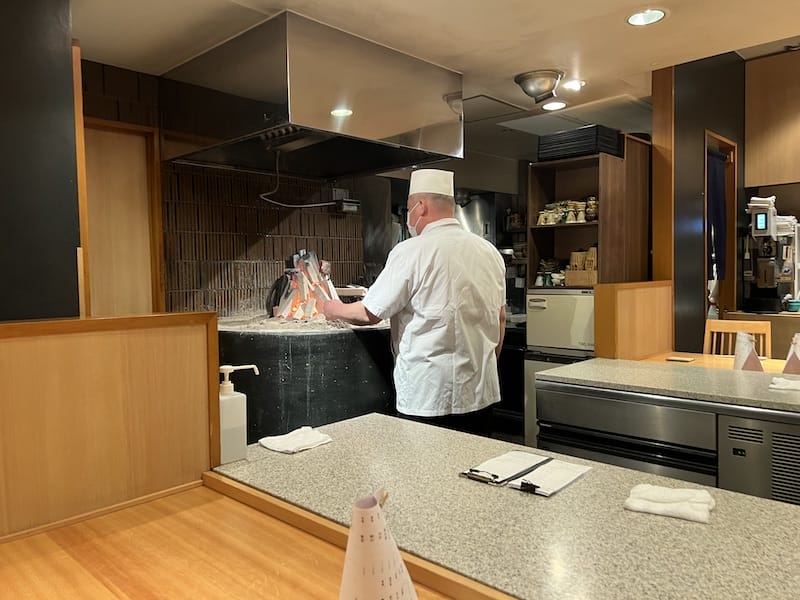
The decor, as in most Japanese restaurants, is very understated – much like its owner. The restaurant is accented by lots of exposed wood and a collage of photographs on the wall of fishermen and fish markets. It is Nara-san’s shrine to the ingredients, which are at the center of all of his dishes.
The seasonal menu changes every time we go. It consists of traditional Japanese dishes executed with a modern accent and presentation. Every dish, from sashimi, grilled fish and beef to tempura, crab croquettes and potato salad, feels delightful and unique. Don’t go in expecting sushi or anything that isn’t on the menu: Nara-san does what he does and knows just what his customers need.
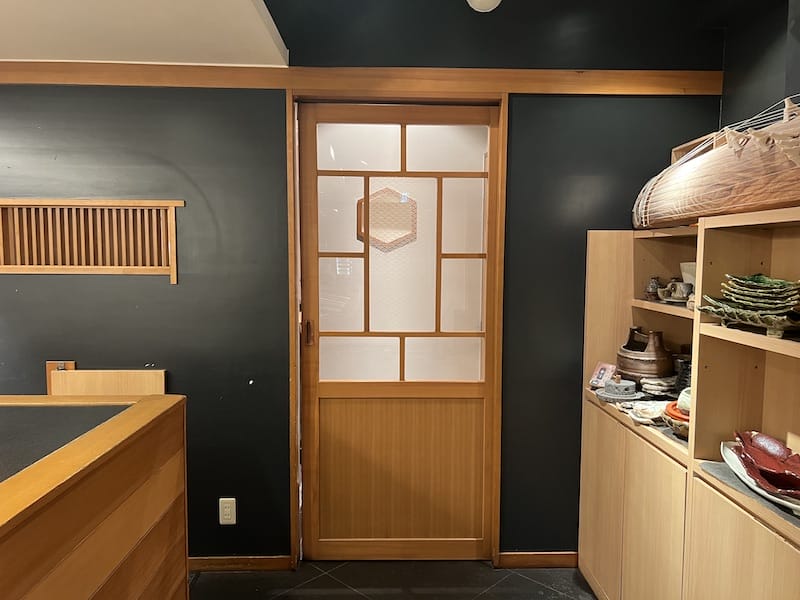
We ordered the sweet cold sake, which was fantastic, not least due to the exquisite presentation. A sake serving bottle (tokkuri) sits in a bath of crushed ice in an original Fujimura plate. It goes perfectly with the thinly sliced grilled steak, seasoned with just a touch of salt and pepper, which comes with its own sweet dipping sauce.
Our finale comes in the form of a seasonal grilled fish, which today is a kinoka-saba, a type of mackerel. The skin has caramelized and the fish melts in our mouths, delivering a deep flavor that warms us through to our bones.
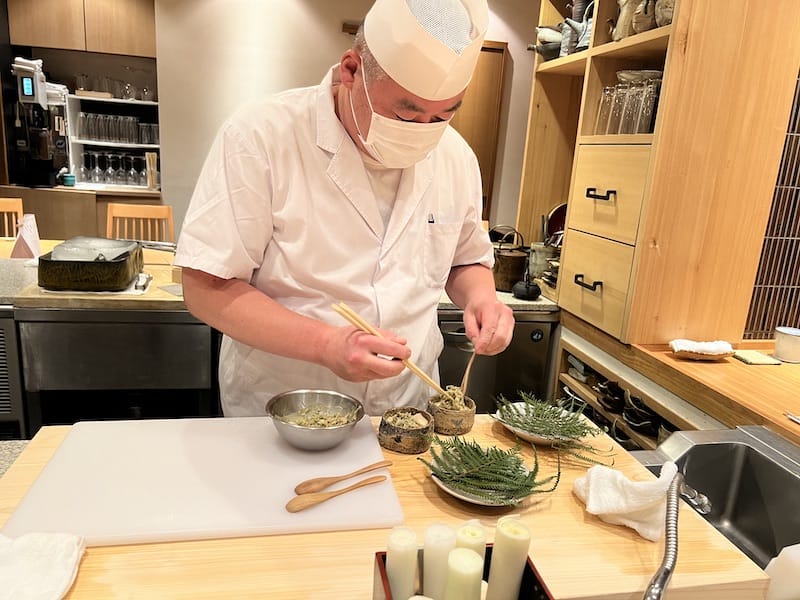
After we finish our meal, Nara-san stops by for a chat, and he introduces us to a new dishwasher who has recently started working at the restaurant. A nervous young woman in a mask walks over and he proudly introduces his daughter, Karin-chan. She is very shy and doesn’t talk much, but it is sweet to see the love and pride in his eyes when he looks at her.
Later he tells us, “I still have restaurants in Tokyo, but I let other people run them. I just want to focus on this place and make it great.” With four other successful restaurants, he could surely retire, sit back and live comfortably. However, he has found his niche, refined it, and wants to be in the center of the action with his family by his side. Just another part of a quiet empire he has built, getting paid and doing it his way. We leave inspired to find our true ikigai, as Hiroki Nara-san has, and hope that his secret restaurant will always have its hidden doors open for us.
Ken KawabataKen Kawabata
Published on February 29, 2024
Related stories
October 20, 2023
TokyoOur introduction to Yakinikuen takes place on a Saturday night. Two German friends, former Tokyo residents and long-time fans of the restaurant, were determined to take an edible trip down memory lane. “We’ll already be in the queue. Hurry!” they told us. Reservations at Yakinikuen, apparently, are only taken for weekdays before 7 p.m., and…
October 20, 2022
TokyoIt might easily be mistaken for a hipster café. From the street in buzzing Shinjuku City ward, a large window illuminates an open kitchen where Yuichi Itoi, sporting a baseball cap, white T-shirt and piercings, is prepping ingredients. As we step inside, we’re greeted by the sound of low-key hip-hop and the chatter of two…
June 14, 2021
TokyoMany people think of miso as the soup that gets tacked onto every Japanese meal. We can still remember our first experience of Japanese food in the West, when the waiter brought the soup at the end of the meal, and someone thought he’d forgotten to serve it at the beginning. Any self-respecting Japanese meal,…







































